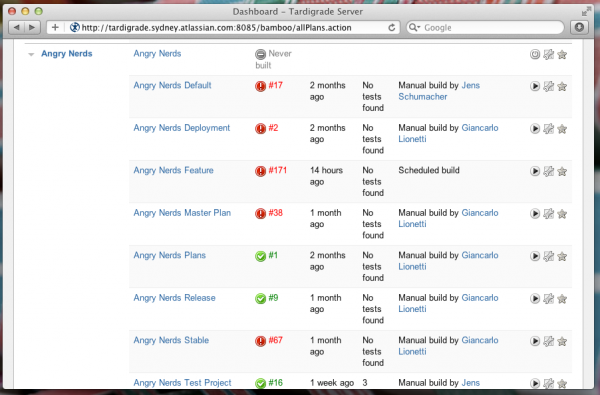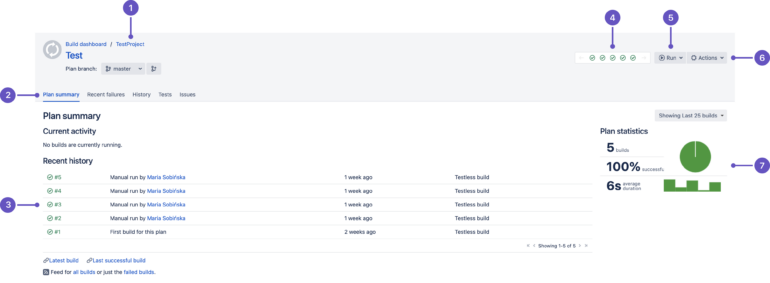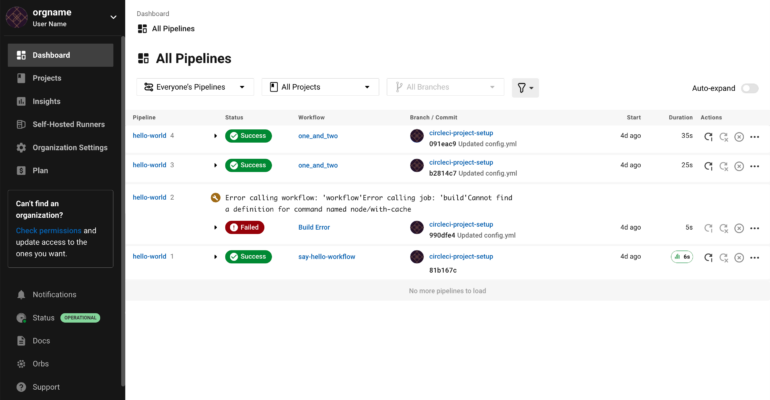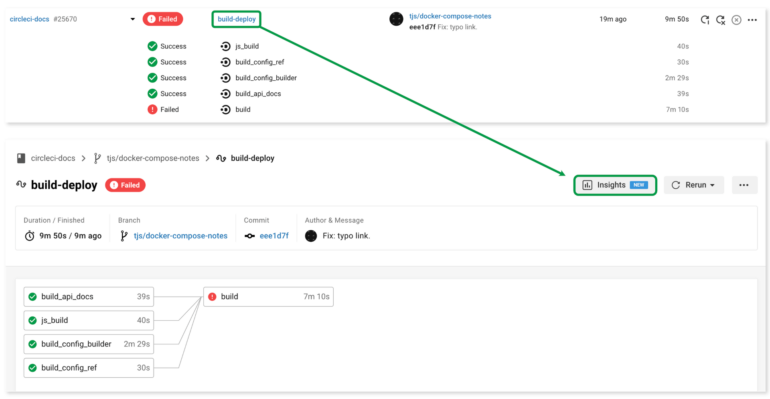
Bamboo and CircleCI are a pair of continuous integration and continuous delivery (CI/CD) platforms that can increase developer productivity and confidence during building, testing, and deployment. Which of these widely used DevOps tools is the better fit for your software development team’s needs? Keep reading to find out, as this guide will discuss both regarding their features, pricing, pros, cons, and differences so you can pick the CI/CD tool with the perfect mix of pricing and functionality.
Jump To:
Atlassian is the team behind Bamboo CI/CD software. The DevOps tool was launched in 2007, and over time, it has gained a reputation for being reliable, scalable, and useful for software development teams looking to minimize errors while maximizing efficiency.
How does Bamboo achieve those goals? Through a host of features that bring automation to the software delivery process, which include:
Bamboo’s automation tool features begin with continuous delivery pipelines for automatically building, testing, and deploying code changes. Bamboo puts developers in complete control with custom build plans, deployment environments, and notifications. It also reduces build time and boosts efficiency by letting developers run multiple parallel builds.

Flexibility is another Bamboo feature worth mentioning. The CI/CD software supports multiple platforms, programming languages, and build tools to accommodate varying developer needs. It has automatic branching, detailed reporting on build times, test results, etc., and integrations with popular Atlassian developer tools like Bitbucket and Jira. And if you need even more automation tool functionality and extra integrations, you get it through the REST API.
Bamboo bases its pricing on agents instead of users. More agents allow you to run more concurrent processes, and you can pay for 1-2,000, according to your development team’s needs.
Here is sample pricing for the CI/CD software:
Bamboo has a 30-day free trial and discounts for nonprofits, academic institutions, and more.
Bamboo has several noteworthy pros for developers, including:
If your software development team needs a build automation tool that is easy to set up and requires little onboarding, Bamboo may be right for you. It is highly flexible with support for multiple programming languages, build tools, platforms, etc., and Bamboo is also highly customizable with its deployment environments, build plans, and notifications. And if your development team already uses other Atlassian products, using Bamboo will be a breeze with its seamless integrations.
Bamboo does have a few cons worth noting:
Bamboo has plenty of pros, but the DevOps tool also has some disadvantages. Yes, the CI/CD software seamlessly integrates with other Atlassian products, but what about non-Atlassian offerings? Depending on your extensibility needs, you may find Bamboo bare there.
Another Bamboo con is its price. Development teams on limited budgets may find the developer tool out of their price range and may prefer an open-source CI/CD tool like Jenkins that is free to use.
You can learn more about Bamboo’s features in our Bamboo CI/CD Tool Review.

CircleCI is a continuous integration and continuous delivery tool that was launched in 2011 by a remote team of global software developers. The CI/CD tool’s features can minimize human error while facilitating build automation for pipelines, giving developers added time for innovation. Its features include:
CircleCI’s features start with flexibility. You can automate builds in multiple execution environments and on any machine. The build automation tool supports Docker, Windows, macOS, GPU, Arm, and Linux VM, plus all languages. And through its robust resource classes, developers can minimize build times while maximizing productivity.

Another way CircleCI boosts efficiency and speeds up software development is through its workflows that optimize resource usage by letting developers run and troubleshoot jobs independently to produce real-time feedback. There is an insight dashboard that aids in making data-driven decisions, plus advanced caching that makes jobs faster. And to avoid context switching, CircleCI has a VS Code extension.
Developers can fix bugs faster with SHS debugging, and if you still need even more functionality out of the CI/CD software, you can get it from thousands of integrations with popular developer tools like GitLab, GitHub, Bitbucket, and more.
CircleCI has four pricing plans to choose from. The first three are cloud-based, while Server is self-hosted:
The Free plan allows for five users and 6,000 build minutes per month. Performance offers 6,000 build minutes per month for five users, and you can add more minutes and users as you grow. The Scale plan offers enterprise-level features and 24/7 support, and the self-hosted Server plan offers unlimited build minutes and 30 user seats you can add to as you expand.
CircleCI is known for the following pros
Complex migration could keep some development teams from switching to better CI/CD software. That is not the case with CircleCI, as it makes migrating from Jenkins, GitHub Actions, and other CI/CD tools a breeze. Beyond being easy to switch to, the build automation tool is easy to use. So if you were worried about having to invest a ton of time in onboarding, that should not be an issue here.
Speed is another CircleCI pro or advantage. The developer tool accelerates delivery with its enterprise-level speed. How fast is CircleCI? According to its website, the CI/CD software is 70 percent faster than the competition. And while all of those pros are impressive, the fact that you can enjoy some of CircleCI’s benefits at no cost is even better since the Free plan comes with 6,000 build minutes per month for up to five active users and 30 simultaneous jobs.
Despite its numerous pros and feature, CircleCI does have some cons, including:
If you make CircleCI your CI/CD software of choice, be prepared for the possibility of downtime. Some users have reported extended outages, so if a lack of stability is a significant concern, you may want to look elsewhere.
Another potential disadvantage of CircleCI is limited support for repositories, as you are pretty much stuck with GitLab, GitHub, and Bitbucket. Lastly, CircleCI’s cost is another con or disadvantage of the developer tool. As your need for added build minutes increases, so will your bill. And trying to calculate CircleCI’s cost can get complicated, as it is based on user seats, build minutes, and more.
Check out our CircleCI CI/CD Tool Review for more information.
Bamboo and CircleCI mainly differ in two areas: Integrations and pricing. Bamboo’s integrations are more Atlassian-centric. That is a plus if you already use Atlassian tools like Bitbucket and Jira, but if you want more non-Atlassian extensibility, CircleCI has more variety.
While both are pricey, Bamboo charges based on agents, not users, while CircleCI charges based on users and build minutes. And CircleCI has a solid Free plan for up to five users and 6,000 monthly build minutes, while Bamboo lacks a complimentary offering.
Which CI/CD tool should your organization pick: Bamboo or CircleCI? The latter is a solid pick if having a free plan is a must and you want superb speed and seamless migration. And if you want a highly-customizable CI/CD tool and already use Atlassian software like Jira or Bitbucket, Bamboo may be the better pick.
SEE: How to choose the right CI/CD platform